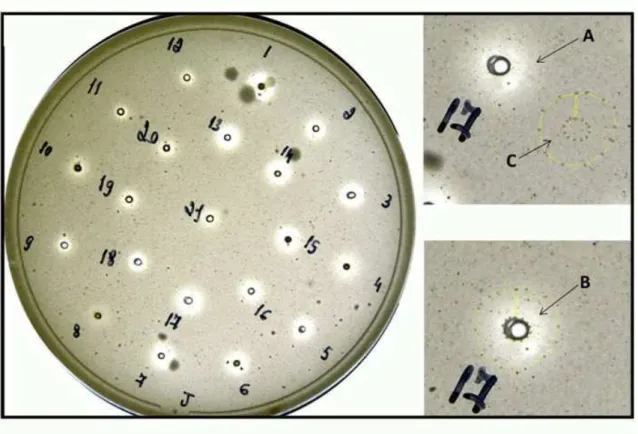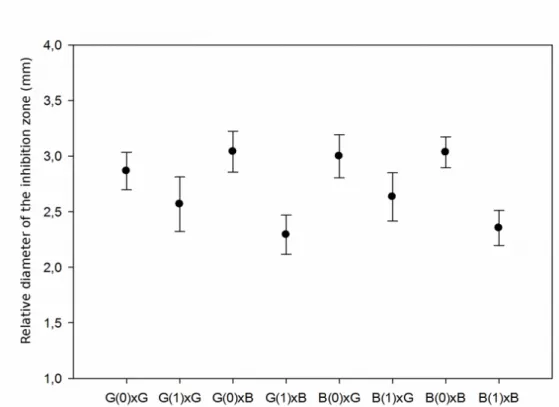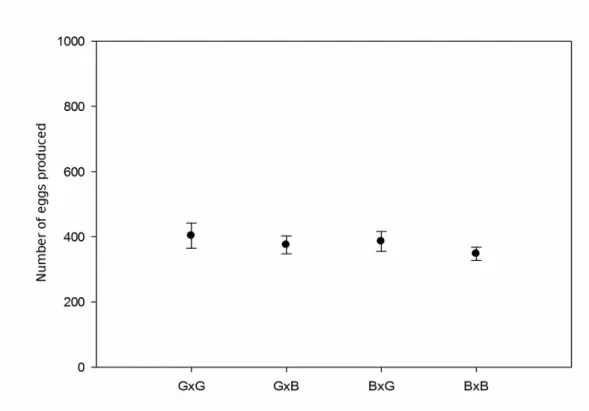DANIEL LUIS VIOL
IS DENSITY-DEPENDENT PROPHYLAXIS TRANSMITTED TO OFFSPRING?
EXPERIMENTS WITH Anticarsia gemmatalis (LEPIDOPTERA: NOCTUIDAE)
Dissertação apresentada à Universidade Federal
de Viçosa, como parte das exigências do
Programa de Pós-Graduação em Entomologia,
para obtenção do título de
Magister Scientiae
.
VIÇOSA
T
Viol, Daniel Luis,
1987-V795i
2015
Is density-dependent prophylaxis transmitted to offspring?
: experiments with Anticarsia gemmatalis (Lepidoptera:
Noctuidae) / Daniel Luis Viol. – Viçosa, MG, 2015.
vii, 27f. : il. (algumas color.) ; 29 cm.
Orientador: Simon Luke Elliot.
Dissertação (mestrado) - Universidade Federal de Viçosa.
Referências bibliográficas: f.24-27.
1. Anticarsia gemmatalis. 2. Inseto - Imunologia. 3. Defesas
animais. I. Universidade Federal de Viçosa. Departamento de
Entomologia. Programa de Pós-graduação em Entomologia.
II. Título.
Ao meu pai Miguel Viol e à minha mãe Célia Cristina da Silveira Viol por todo amor e
amizade, pela educação, pelo exemplo, pelas oportunidades, por todo incentivo e apoio, desde
sempre. Ao meu irmão Miguel, pela amizade e companheirismo. A toda minha família e amigos
pela torcida e incentivo.
À Ana, pela profunda amizade e pelo amor. Por todo apoio e carinho, especialmente nas
adversidades. Pela companhia. Por tornar minha vida mais feliz.
Aos colegas do Laboratório de Interações Inseto-Microrganismo pela boa convivência e
pelo espírito cooperativo.
À Fernanda, Débora e Lorena pela amizade, por toda ajuda, dedicação e boa vontade
com a execução dos experimentos, inclusive nos finais de semana, feriados e fora do horário
normal de trabalho.
À Verônica pela amizade, ajuda nos experimentos, por sua dedicação e competência ao
cuidar do laboratório e garantir um bom ambiente de trabalho a todos.
Ao Prof. Sam pela orientação desde a graduação, pelas oportunidades, pelo exemplo e
pela formação crítica em ciência.
Ao Farley pela amizade, pela coorientação desde a graduação, pela ajuda em todas as
etapas da produção desta dissertação, por todas as oportunidades de aprender ciência na prática.
Ao Prof. Eliseu, à Carla e ao Farley por aceitarem compor a banca de defesa, pelas
sugestões e críticas.
Ao Prof. Eraldo, por esclarecimentos sobre Lepidopteros.
À Universidade Federal de Viçosa, através de seus professores e servidores, pela
formação acadêmica e oportunidades. Em especial, ao Departamento de Entomologia.
A CAPES pela concessão da bolsa de mestrado.
A todos que contribuíram para finalização desta etapa. Muito obrigado!




